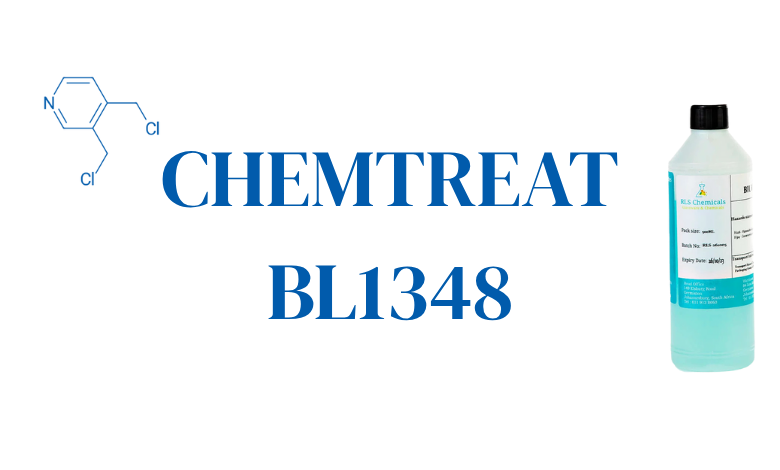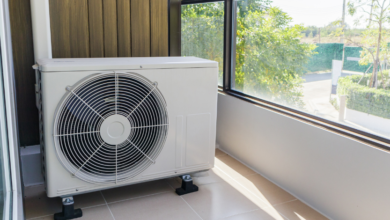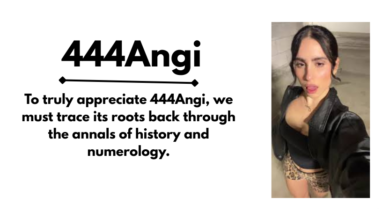Everything You Need to Know About ChemTreat BL1348: Specs, Usage, Safety, and Tips

If you work in water treatment, boiler maintenance, or industrial operations, you’ve likely come across ChemTreat BL1348. It’s one of those chemical names that comes up in maintenance logs, SDS files, or supplier lists — but not everyone really knows what it does or how it fits into the system.
ChemTreat BL1348 is a specialized water treatment chemical used primarily for boiler water systems. Its main job is to control scale, corrosion, and deposit formation — three of the biggest threats to any boiler’s efficiency and lifespan.
Boilers that operate without proper chemical treatment often experience mineral build-up and internal corrosion, leading to higher fuel costs, frequent breakdowns, and sometimes catastrophic failures. That’s why industrial water treatment programs rely heavily on products like BL1348.
In this guide, we’ll break down what ChemTreat BL1348 is, how it works, how to use it safely, and what best practices can help you get consistent performance. I’ll also share a few insights and lessons learned from field use, so this doesn’t read like a datasheet but like real advice from people who’ve handled this chemical day to day.
2. Technical Specifications & Chemical Properties
ChemTreat BL1348 is formulated as a liquid blend of polymer-based inhibitors, phosphates, and dispersants. These ingredients work together to prevent the formation of calcium and magnesium scale inside boilers and pipelines.
While ChemTreat doesn’t publicly release the exact formulation (for proprietary reasons), the Safety Data Sheet (SDS) gives enough technical clues to understand its function and handling needs.
Here are general properties based on the SDS and field data:
| Property | Typical Value / Description |
|---|---|
| Appearance | Clear to pale yellow liquid |
| Solubility | Completely soluble in water |
| pH (as supplied) | Mildly alkaline (usually 10–12) |
| Odor | Slight chemical odor |
| Specific Gravity | Around 1.1–1.2 |
| Main Ingredients | Phosphonates, polymers, dispersants |
| Packaging | Typically 5-gallon pails or 55-gallon drums |
The alkaline nature of BL1348 is key to its performance. It helps buffer the system’s pH, reducing acidic corrosion. Meanwhile, the polymer dispersants keep solids suspended so they don’t stick to metal surfaces and form scale.
If you handle the product, always read the SDS carefully. It includes important data about safe storage, first aid, and environmental precautions. Even though BL1348 is not highly toxic, improper handling can still cause skin irritation or damage to surfaces.
Read Also: Ena dream bbq twitter greedy and meanier
3. How ChemTreat BL1348 Works
At its core, ChemTreat BL1348 is a boiler treatment product designed to prevent scale and corrosion. These two problems are linked to the chemistry of water.
Scale Control
Boiler feedwater usually contains calcium, magnesium, and silica. When water is heated, these minerals precipitate and form scale on heat-transfer surfaces. A thin scale layer can drastically reduce efficiency because it acts as insulation. For example, just 1/16 inch of scale can increase fuel consumption by more than 10%.
BL1348 prevents this by using phosphonates and polymers that keep minerals in suspension. Instead of settling on surfaces, they stay dissolved and are removed during blowdown.
Corrosion Inhibition
Oxygen, carbon dioxide, and low pH can cause metal corrosion. BL1348 creates a protective film on metal surfaces and helps maintain proper alkalinity. This combination prevents pitting, rusting, and metal loss.
Dispersant Function
Another underrated benefit is its dispersant capability. BL1348 breaks up sludge and debris so they don’t accumulate inside the boiler. This makes periodic cleaning much easier and extends the lifespan of other treatment chemicals in the system.
4. Applications & Use Cases
ChemTreat BL1348 is primarily used in low to medium pressure boiler systems, typically operating under 600 psi. It’s well-suited for:
-
Industrial manufacturing plants
-
Food processing facilities
-
Hospitals and institutional boilers
-
Commercial buildings
-
District heating systems
It can also be used in closed-loop heating systems if recommended by ChemTreat engineers, though it’s mainly intended for boilers.
Here’s a quick example:
A small food plant in Ontario had constant scale buildup despite regular blowdowns. After switching to BL1348, scaling decreased by over 70% within two months. The operators noticed cleaner sight glasses and fewer hot spots on tubes. This real-world feedback shows how effective proper dosing and monitoring can be.
5. Usage, Dosage & Integration
Using BL1348 effectively depends on several factors: feedwater quality, boiler design, operating pressure, and existing treatment program.
Feeding Method
The product is usually fed continuously into the boiler feedwater line or condensate tank using a chemical feed pump. This ensures steady protection and avoids concentration swings.
Dosage
The exact dosage depends on:
-
Feedwater hardness and alkalinity
-
Make-up water quality
-
Blowdown rate
-
Boiler load
However, a typical dosage range is 100–300 ppm (parts per million) in the feedwater. Always start on the lower end and adjust based on test results.
Monitoring
Operators should regularly test:
-
pH
-
Conductivity
-
Phosphate or residual polymer concentration
-
Total dissolved solids (TDS)
Routine testing ensures you’re maintaining protection without overfeeding the chemical, which can waste product and affect system chemistry.
Integration
BL1348 works best as part of a complete water treatment program, which may include:
-
Oxygen scavengers (like sulfite-based products)
-
pH adjusters
-
Condensate return line treatments
When used together, these chemicals maintain a balanced and protected boiler environment.
6. Safety, Handling & Regulatory Aspects
While BL1348 is not classified as highly hazardous, it’s still a corrosive alkaline solution. Always handle it with care and appropriate personal protective equipment (PPE).
Handling Precautions
-
Wear gloves, goggles, and chemical-resistant clothing.
-
Avoid direct contact with skin and eyes.
-
If splashed, rinse immediately with plenty of water.
-
Do not mix with acids — it may cause a violent reaction.
Storage
-
Store in a cool, dry area away from sunlight.
-
Keep containers tightly closed.
-
Avoid freezing temperatures, which can affect product stability.
Environmental Considerations
Avoid discharging concentrated product directly into drains or waterways. Even though diluted concentrations in boiler blowdown are generally acceptable, concentrated spills can harm aquatic life.
Regulatory
BL1348 complies with most industrial chemical regulations, including those under the U.S. EPA and Canadian CEPA frameworks. Always consult your local ChemTreat representative for site-specific guidance.
7. Comparisons & Alternatives
ChemTreat produces a full line of BL-series products. BL1348 is often compared with:
-
BL1342 – similar functionality but optimized for systems with higher alkalinity
-
BL1590 – used in high-pressure boilers
-
BL1660 – designed for soft water conditions
Choosing the right product depends on:
-
Water hardness
-
Pressure and temperature
-
System metallurgy
-
Desired phosphate or polymer control method
If you’re unsure, a water analysis by ChemTreat or a local lab can help determine the best fit.
8. Troubleshooting & Problem Solving
Even with the right product, improper use can lead to problems. Here are some common issues and how to fix them:
| Problem | Possible Cause | Solution |
|---|---|---|
| Scale still forming | Underfeeding BL1348 or poor blowdown control | Increase dosage, verify feed pump calibration, check water hardness |
| Foaming in boiler | Overfeeding chemical or high TDS | Reduce dosage, increase blowdown |
| Corrosion observed | Low pH, oxygen ingress, or unbalanced program | Check deaerator performance, add oxygen scavenger |
| Sludge accumulation | Poor dispersion or low feed rate | Increase feed rate or improve mixing point |
In most cases, testing and observation can quickly point to the cause. The key is consistency — chemical programs only work if dosing and monitoring are regular.
9. Best Practices & Field Experience
Over the years, I’ve seen both excellent and poor boiler treatment programs. The difference usually comes down to three habits:
-
Test often and record results.
Keep a simple log sheet. Record pH, conductivity, phosphate residuals, and make adjustments weekly. -
Don’t neglect blowdown.
Blowdown isn’t waste — it’s your system’s cleaning cycle. Removing dissolved solids keeps treatment chemicals effective. -
Collaborate with your chemical supplier.
ChemTreat provides on-site service visits for a reason. Their reps can fine-tune programs based on your system’s actual data.
A maintenance supervisor I once worked with summed it up well:
“The chemicals don’t fail — our discipline does.”
BL1348 works when it’s respected as part of a system, not as a quick fix.
10. Conclusion
ChemTreat BL1348 is a reliable, proven boiler treatment chemical that offers effective scale and corrosion protection for a wide range of industrial systems. Its formulation of phosphonates and polymers provides balanced control, keeping your boiler clean, efficient, and long-lasting.
The key to success isn’t just buying the chemical — it’s using it properly. Follow dosage guidelines, maintain regular monitoring, and treat your boiler water program as preventive maintenance, not a reaction to problems. When used right, BL1348 can help you achieve smoother operations, fewer shutdowns, and significant energy savings.
FAQ
Q1. What is ChemTreat BL1348 used for?
It’s used to prevent scale, corrosion, and deposit formation in boiler systems.
Q2. Can BL1348 be used in food plants?
Yes, many food processing facilities use it in closed systems, but always confirm compatibility with food-grade requirements.
Q3. How often should I test boiler water when using BL1348?
At least once a week, though daily testing is ideal for high-demand systems.
Q4. Is BL1348 dangerous to handle?
It’s mildly corrosive, so use standard PPE like gloves and goggles.
Q5. What’s the difference between BL1348 and BL1342?
They’re similar, but BL1342 is better suited for systems with higher alkalinity or hardness.
Q6. How long does BL1348 last in storage?
Usually 1–2 years if stored properly in sealed containers away from extreme temperatures.



